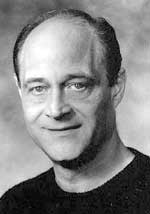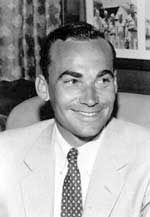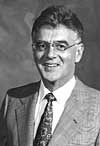Narrator Ray Otis details the origins and influences of the Storz Top 40 format, beginning with the Top 10 on daytimer KOWH, Omaha, which became the nation's top-rated independent radio station in the early '50's. Included, early University of Omaha research, long-time Storz employee Johnny Pearson explaining the perceived demographic of KOWH listeners, the influence of Your Hit Parade, a jingle for early DJ Sandy Jackson, News at :55, Charles Gray on the direction of early Storz news, the original Storz stations: WTIX New Orleans (1953), WHB Kansas City (1954) WDGY Minneapolis-St.Paul (1955) and WQAM Miami (1956); William L. Armstrong tells the story of the first Top 40 program at WTIX.
Narrator Richard Fatherley demonstrates the electronic gadgets (time tone, automation, reverb) developed by Dale Moudy which defined much of the early Storz Top 40 sound. Moudy left Storz for ABC, where he wired KQV Pittsburgh as the nation's first network owned and operated Top 40 station.
In this short excerpt, Ray Otis introduces Johnny Pearson, who reveals that Gordon McLendon studied the Top 40 format at WHB in 1955, before introducing Top 40 at KLIF in Dallas.
by Chapman Recording. |
Like a Rolling Stone
By Ben Fong-Torres
We are all wrong.
At least that's what Richard Fatherley says. Fatherley, who lived in Kansas City, Kansas and passed away on March 8, 2010, was a production director at Storz's KXOK-St. Louis in the mid-'60s and PD at the chain's Kansas City giant, WHB, from 1967 through '69. He joined the Storz group just after Todd Storz's death, at age 38, in 1964.
Storz, it's generally agreed, invented Top 40. The other broadcaster credited with pioneering the format is But it's what is not in the Fatherley documentary that's raising eyebrows. Namely, the classic story about that evening in the bar is missing. Instead, the birth of Top 40 is traced to some 1950 University of Omaha research that indicated that listeners listed music as a major reason for using the radio. Storz acquired the research. Then, inspired by the work of WNEW-New York, he ditched all network programming from KOWH for music, and, in line with the popular music focus of such shows as Your Hit Parade and Lucky Lager Dance Time, gave the top ten songs heavy rotation. After acquiring WTIX in New Orleans, he heard about rival WDSU's Top 20 on 1280 show, and, as Fatherley told me, "He added 20 titles, upstaged WDSU by one hour, and went on for an hour after the other show had ended." Thus, he had a Top 40 show. (Video: Wm. L. Armstrong confirms the origin of the Top 40 format here.) But what about that scene in the bar, a scene described numerous times by Bill Stewart and spread by other employees, by magazine accounts, and by various radio history books? "The bar room is a mythology," Fatherley says. "Todd Storz used what he observed of jukebox play and record sales to determine the frequency of record play." Fatherley pointed me to a 1957 article in Television magazine, "The Storz Bombshell," in which the young radio wizard explained his format. "I became convinced that people demand their favorites over and over while in the Army during the Second World War," he said. "I remember vividly what used to happen in restaurants here in the States. The customers would throw their nickels into the juke box and come up repeatedly with the same tune." There was the bombshell. Storz was telling the juke box story; only it'd happened not across the street from KOWH, but in another time; another place. Radio's Revolution is not for sale. However, Fatherly is making it available "to people who have an interest in the history." Here's more information.
(Reprinted from Gavin with the author's permission. Learn more
about the history of Top 40 radio from Ben Fong-Torres' book, The Hits Just Keep On Coming: The History of Top 40 Radio, published by Miller Freeman Books (800-848-5594, www.books.mfi.com, ISBN: 0-87930-547-9)
How about a U.S. Postage Stamp honoring the Father of Top 40? Read A Stamp For Storz.
|
 Richard Fatherley
Richard Fatherley
 op 40 radio, as we all know by now, was born in a tavern in Omaha, Nebraska one evening in the early '50s, when
op 40 radio, as we all know by now, was born in a tavern in Omaha, Nebraska one evening in the early '50s, when 